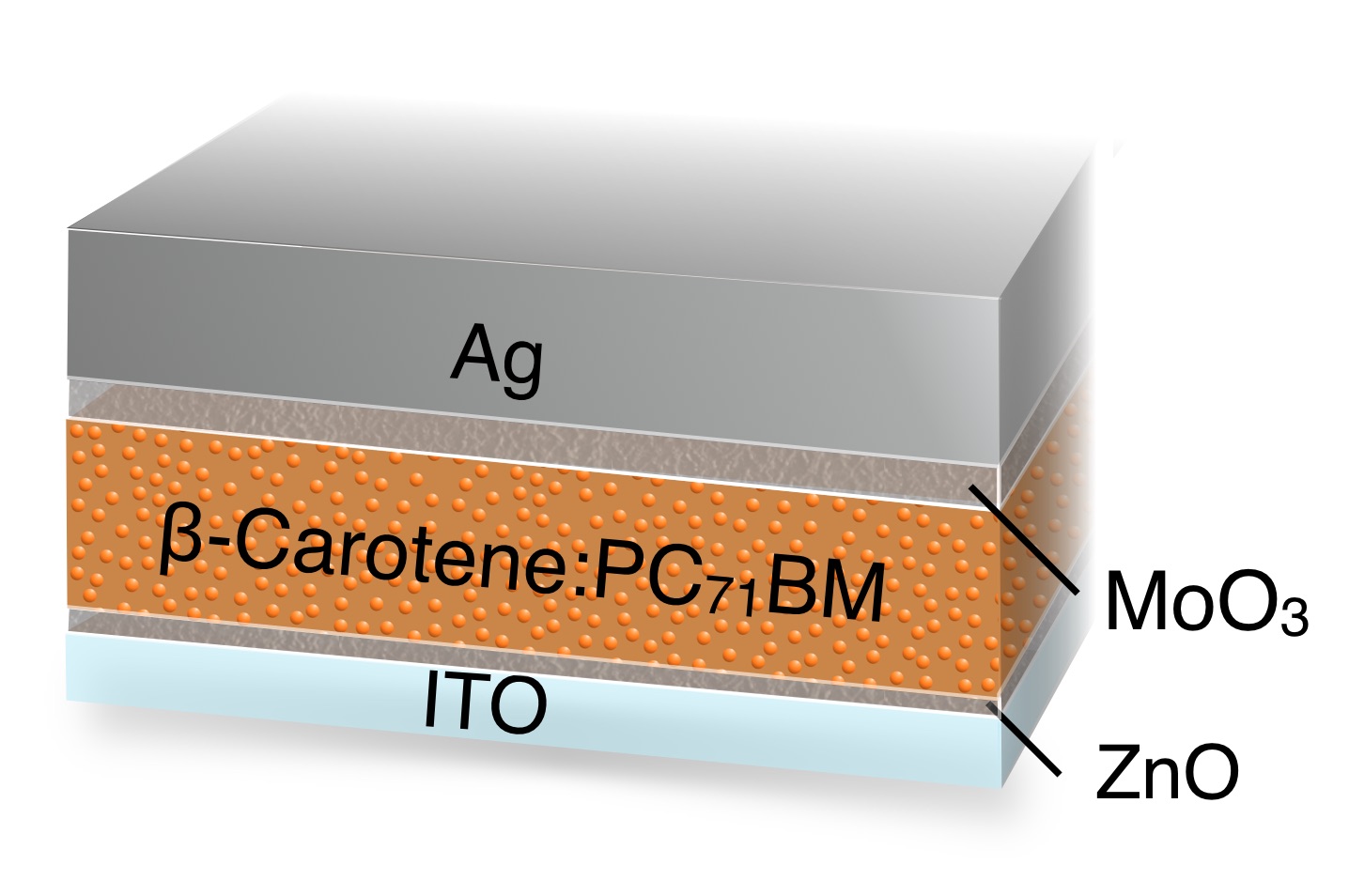Organic solar cells using carotenoids as electron donors
Organic solar cells (OSCs) have simple manufacturing process, energy saving, light weight and flexible mechanical properties. Recentry, its power conversion efficiencies (PCEs) exceeds that of a-Si solar cells, and further improvements in efficiency and stability are expected. However, the conventional OSCs photoelectric conversion materials use synthetic polymers, and the synthesis process consumes a large amount of harmful solvents and energy.
In this study, we apply the natural photosynthetic pigment carotenoid, which is abundant on the earth, to the electron donor material of the OSC active layer, and contribute to the Sustainable Development Goals (SDGs) and green chemistry. Figure 1 shows a β-carotene OSC fabricated with an inverted structure that is considered to be highly stable in the atmosphere. To improve the conversion efficiency, we adjust the electron acceptor material and the active layer nano morphology. Also, we fabricate see-through devices, which is expected to be applied to window solar cells, by changing the deposition conditions of the metal electrode (Fig. 2).
Iit is known that the oxidative decomposition of β-carotene-only films occurs rather rapidly under light irradiation. However, our fabrication process of OSCs, such as mixing with the acceptor material and coating of the metal electrode, protect β-carotene from oxidative degradation, thus leading to highly air-stable devices.


Fig.1 Fig.2